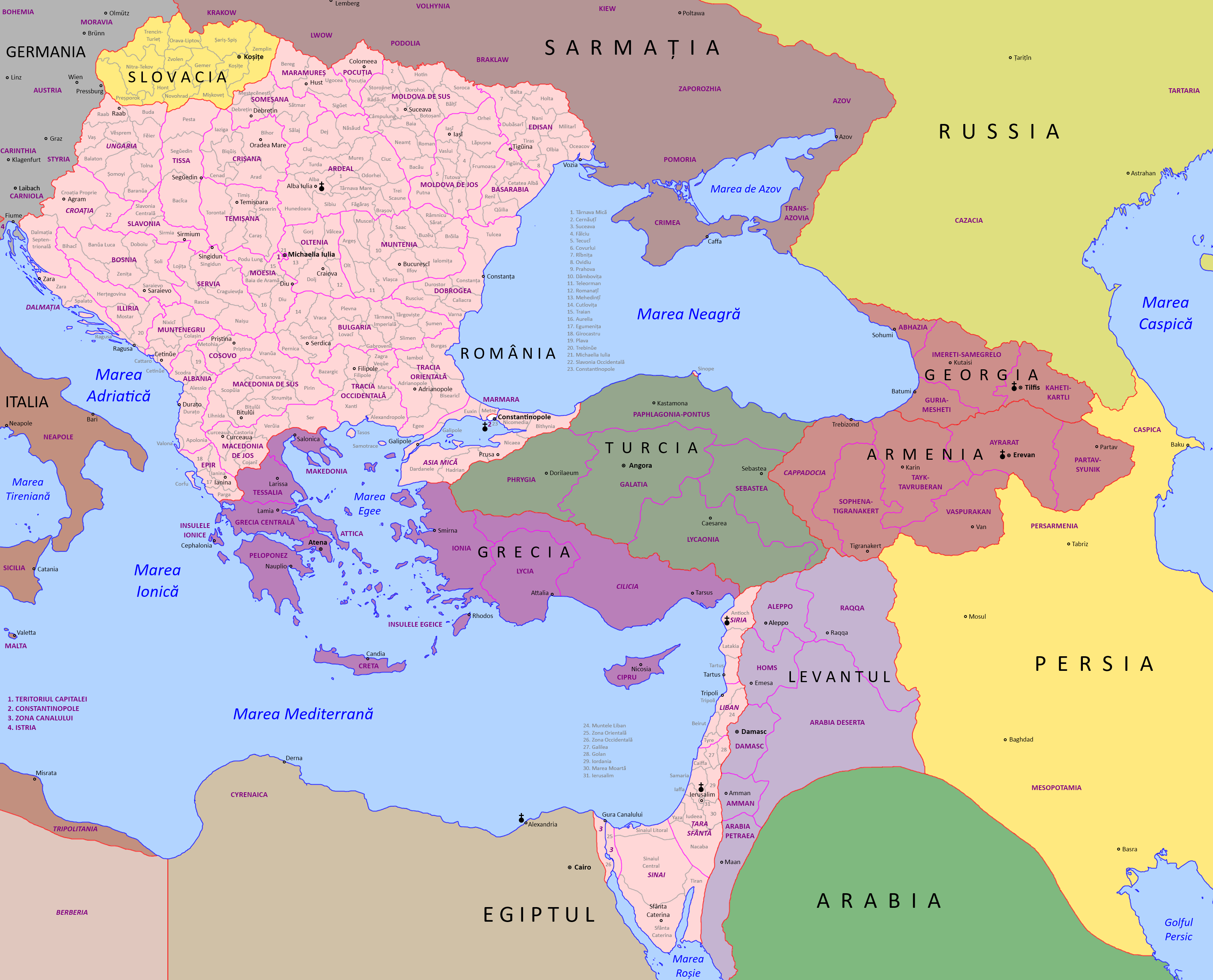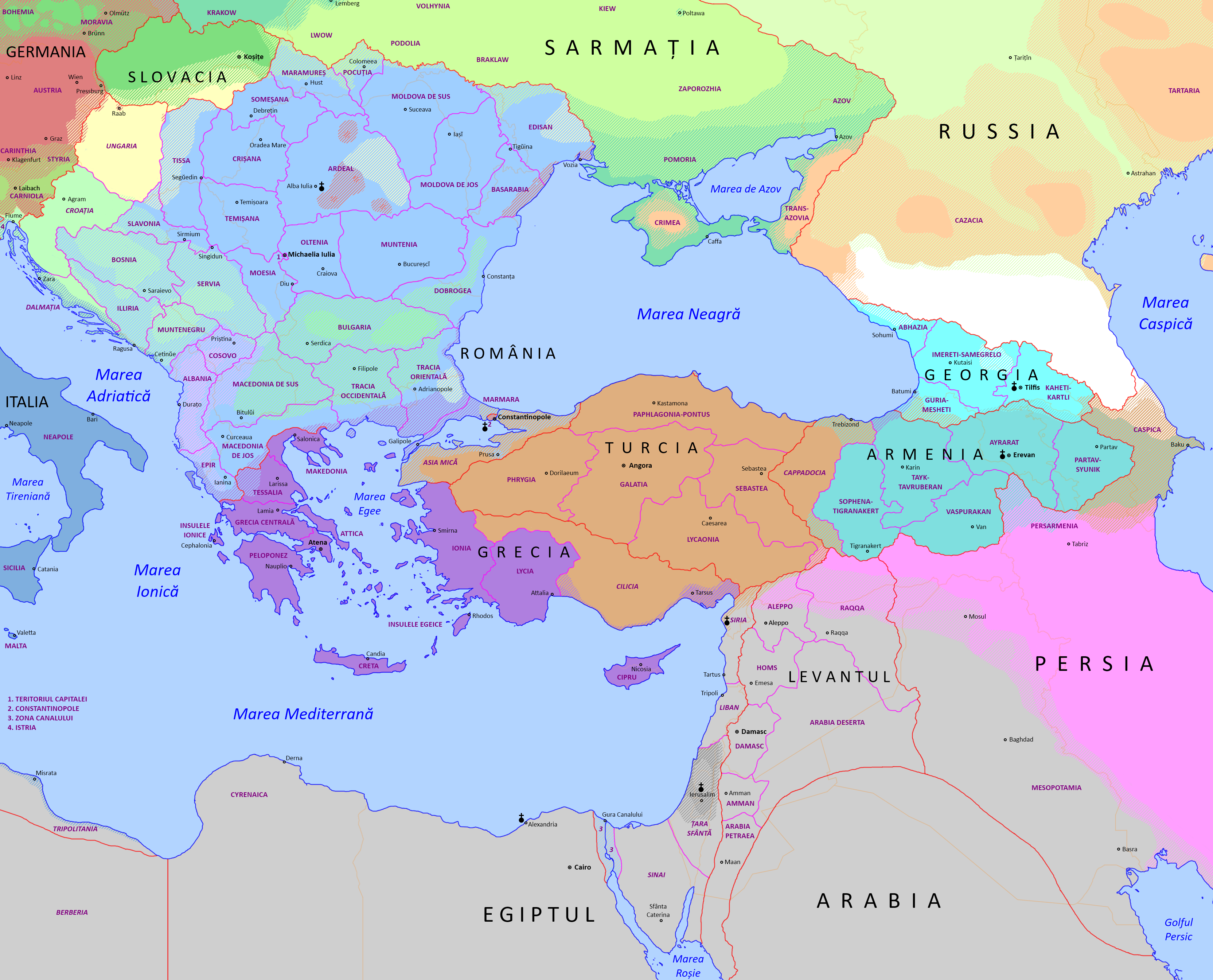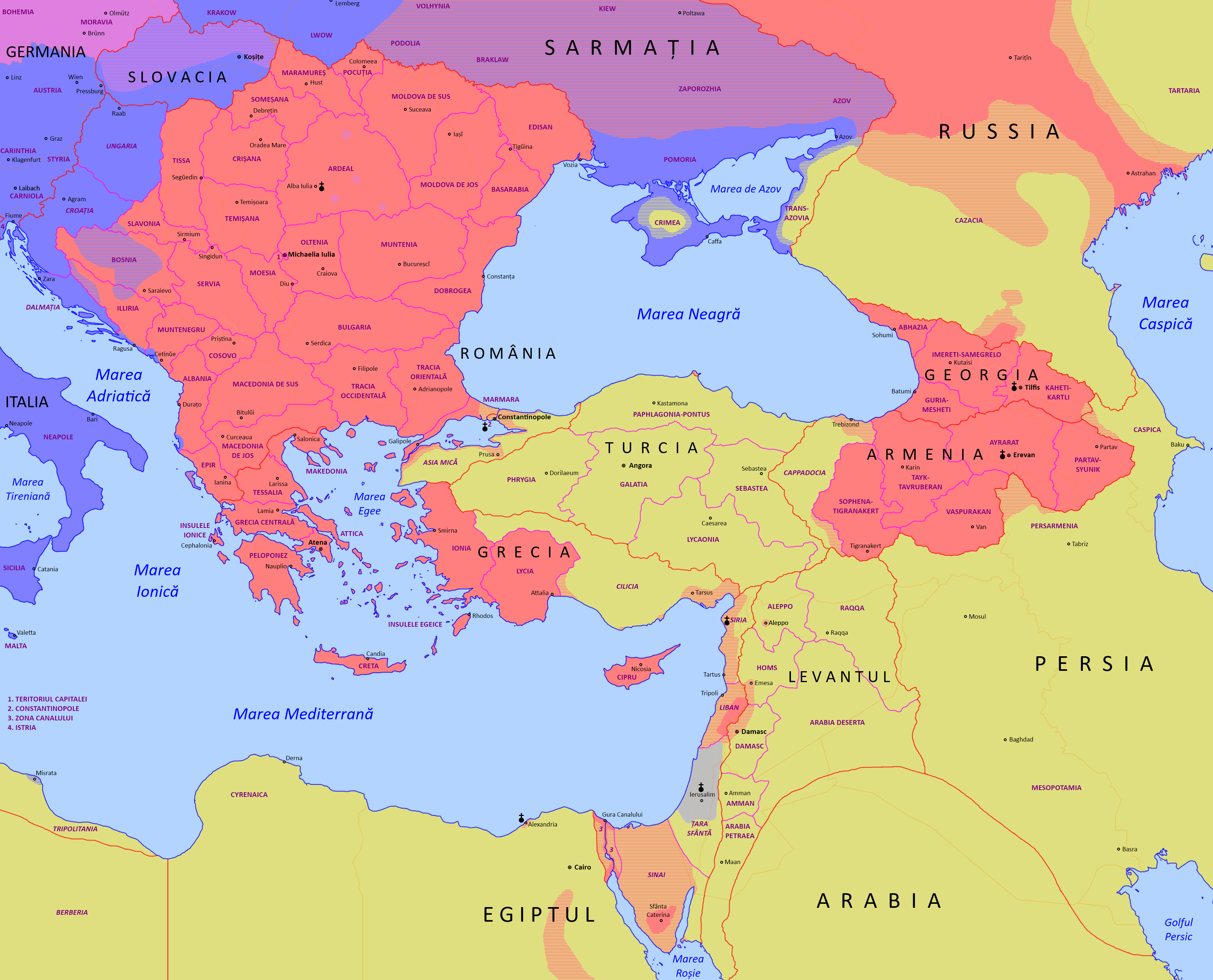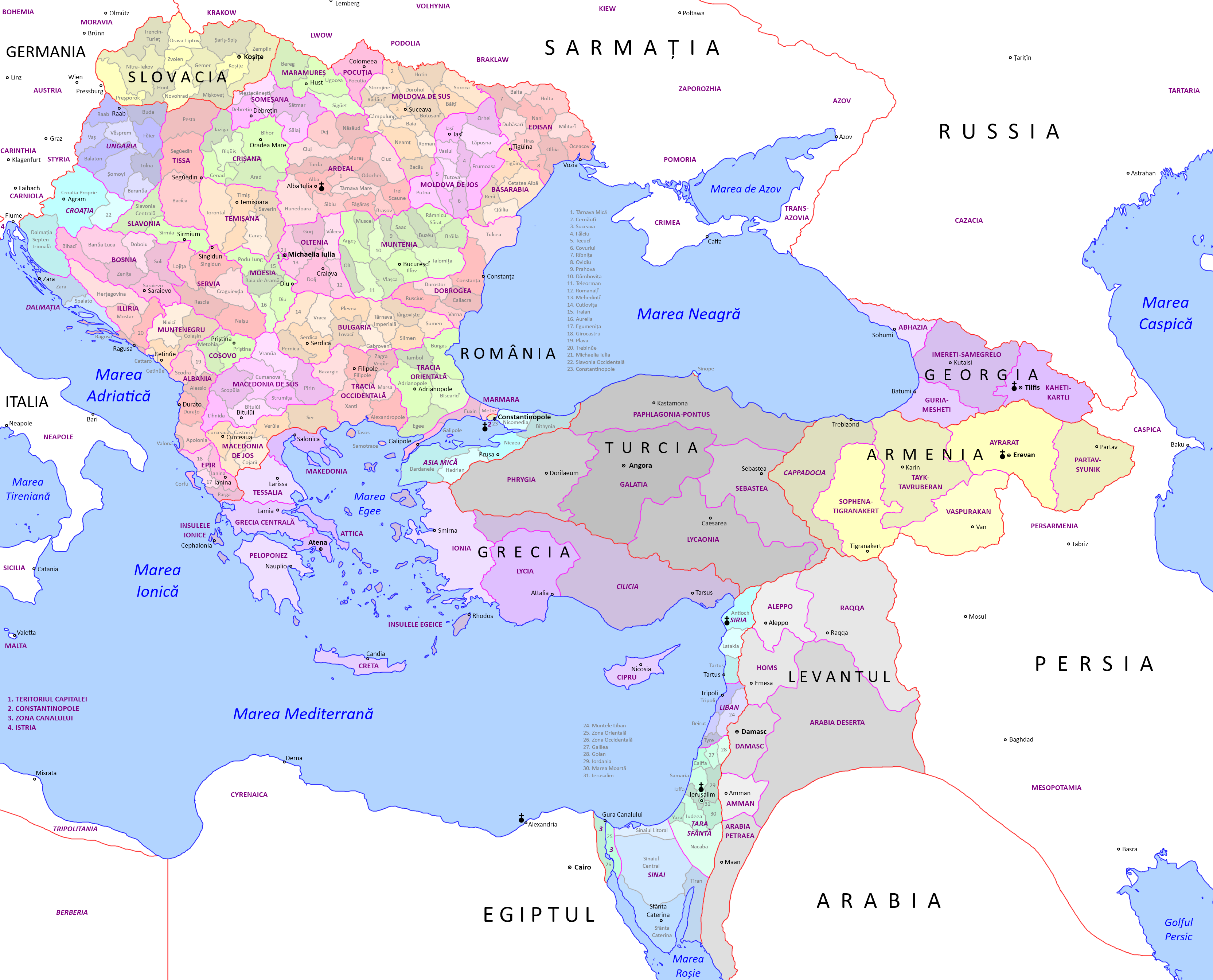5 January 1652, Paradise
Voice: "Congratulations, you have been admitted to Paradise.
You got lucky. Enjoy your
eternity!"
Iulia: "Umm, who are you and why did you say I got lucky?"
V: "Who am I is irrelevant and I said that you had gotten lucky because of your
rather low score."
I: "What score and what was wrong with it?!"
V: "You will have
plenty of time to learn about all these. However, my time is rather limited and we have already arrived to our destination. Is there anyone in particular you would want
to interact with?"
I: "You mean,
dead people?"
V: "Well, certainly. No living human is around here. Let me see... Your parents did not make it here..."
I: "What! Do you mean they are in Hell now?"
V: "They are not on Earth and they are not here, so..."
I: "But what did they do? And what about my granddaddy?"
V: "I do not know and I really have to go now. Your paternal grandfather, Mihai, is here. Do you want me to call him?"
I: "Yes, sure, I can't wait to see him again!"
V: "It's all settled then. Wait here for your grandfather. Good bye."
I: ... (whoever Iulia had been speeking with wasn't there anymore)
************
Mihai: "Iulia!"
Iulia: "Granddaddy!"
M: "I'm sorry that you had to die so young, but I'm glad that you managed to get here. It's not so nice
down there..."
I: "Yes, probably... Shoudn't we hug?"
M: "What is left of our bodies is slowly turning into dust back on Earth. It's only our souls that inhabit this place. We can still think and our minds can interact with each other, but there is no way we could possibly hug. I'm sorry, my dear."
I: "That's it then, no hugs. Although it bothers me a little... But I have so many things to ask you..."
M: "We have an eternity in front of us. An eternity of thinking, learning, watching and communicating with each other. We shall have plenty of time for everything."
I: "Who else is around here? And
watching... what exactly?"
M: "Grandmother Stanca and... Actually very few people which used to be close to you. It's usually like this when one dies very young. Most of the people you knew and were fond of are still alive on Earth. You will encounter some of them in the future, though."
I: "Oh, I do remember grandmother. I look forward to see her again! Where is she now?"
M: "She is waiting for us at home. Do you want to live with us or..."
I: "Of course I want to live with you! What kind of question is that? And you did not answer my question about
watching. What exactly are we going to watch? There does not seem to be anything worth watching around here. And when will we go home?"
M: "I failed to answer your questions only because there are
so many of them at the same time! Remember, my dear, there is no need to hurry. We have
all the time we will ever need. And now the answer to your questions. We can watch the Earth, obviously. It is the most popular pastime we have. And we'll be home well,
soon. Time does not have any relevance here. We'll just keep talking and we'll get home."
I: "But that's wonderful! Can we
intervene if we see something we don't like? I mean... give some advice to someone, or..."
M: "Certainly not. It is explicitely forbidden. Did I intervene to stop you when you were
rampaging through Europe and the Orient with
no clear purpose and
no tangible gain for our Country? Have I given you any advice? Because believe me, I would have if I were allowed to!"
I: "Was I... so wrong? I hoped that you would be proud of me. I tried to emulate you. To be a great warrior and conqueror like you."
M: "You were not like me. Yes, you were a great warrior, in fact you were
the greatest warrior the Romanians have ever fathered. The only problem with this is that
being a warrior is not a good thing. It is not something
to be proud of. Yes, you got that right, Iulia. War is bad. War is awful. People suffer."
I: "But you were a warrior yourself..."
M: "I have only waged war against those who attacked my Country and mistreated my People. When I became Voivode, the Romanians had four enemies outside and four more inside our Realms. I had vanquished the Austrians, the Tatars and the Ottomans and forged a durable alliance with the Poles. As of the the inside foes, the Hungarians, the Szeklers, the Saxons and the Greeks, I treated them fairly while neutralizing their power and the threat they represented."
I: "I see. But you have never taught me these things..."
M: "Because I have never thought that you would actually go to war and invade Greece, Italy, Croatia, Hungary, Sarmatia, Russia, Turkey, the Levant, Arabia! Did I miss anything?! Really? I just thought you were joking with you warmongering fantasies! I should have forbidden you to go to the Military Academy!"
I: "But I won..."
M: "What did you win, my dear granddaughter? What did Romania win? Please enlighten me."
I: "I conquered
more territory than you..."
M: "I had only conquered the lands where the Romanians lived! Well,
mostly. There were very few Romanians, if any, in Oriental Thrace, for example, but it was badly needed for its
strategic value. The colonies were only intended to bring revenue, the Holy Land from pilgrims and the Sinai from the Canal fees. I have never fathomed how on Earth have you come to the conclusion that absorbing all the Orient into Romania was somehow a desirable outcome! And this is not all. You made lots and lots of other mistakes..."
I: "Like what?"
M: "The Aromanians for example. Was it normal the way you treated the Aromanians which have chosen to stay in Greece?"
I: "But... They were
traitors! They wanted to be Greeks!"
M: "They were
mistaken, not traitors. You should have persuaded them to return to the bosom of the Nation by skillfully using propaganda, not coercion! What have you really achieved by... Should I say it? By
kidnapping more than twenty thousand people from the country they thought was theirs... Yes, wrongfully thought, but still... Now, instead of learning to love Romania and become Romanians again, they
hate us. You just made the task of reconquering their souls much more difficult!"
I: "I understand now, granddaddy. You are right to be mad at me. But I was alone, I had no one to advise me! Had you still lived..."
M: "Had I still lived you would not have been Empress. But you could have taken advice from Cristina or from our counsellors. Only that you had chosen to ignore them. Pity. But we'll continue this conversation later, because now we have arrived home. Stanca!"
************
6 January 1652, Paradise
Iulia: "It's very nice to see all these people mourning me. But I'm a little confused. How does this window work? Is it by
magic? Because I thought that magic does not exist."
Mihai: "Of course magic does not exist. It's
science. But it's very difficult to explain. I have been trying to comprehend it myself, but the ten years since I have been here were not enough to learn all the science behind it."
I: "And what about the other window, the one with
black curtains?"
M: "Oh,
that one. You should leave it alone. It's rather
depressing."
I: "What is it, granddaddy? You had just made me more curious. I'm a
tough girl, you know that."
M: "It is a window to another world, another Universe, different from our own."
I: "I don't follow you."
M: "Yes, it's complicated. Let me try to explain you this way... Imagine that you have a sheet of paper and draw a world on it. And then you draw
another world on
another sheet of paper. The two worlds are completely separate, because they are on different sheets of paper. And they do not ever intersect because, while infinite, they are parallel. This works because the drawing has only two dimensions but you have three. It's the same with these Universes, they have three dimensions, breadth, width and height, but the
Creator has more than three! You can have an
Infinity of three-dimensional parallel Worlds stacked together like sheets of paper in a multi-dimensional Super-World!"
I: "I am dumb. I do not understand a thing of what you're telling me."
M: "No, honey, you are not dumb. I did not understand these concepts either when I had first arrived here. But I was curious and I started to learn some Geometry... You don't have much to do around here and we have to find something to entertain our minds with. You don't need to work, to sleep, to eat, to drink, you don't have any worries and you are not in any danger, plus you have an endless amount of free time and access to all the knowledge there is!"
I: "And how many of these parallel worlds are there?"
M: "There are more than an Infinity of them!"
I: "What does that even mean? There is nothing bigger than Infinity!"
M: "How many points are there on a line?"
I: "An Infinity, of course."
M: "And aren't there more points in a plane than in a line?"
I: "You got me! Now, please, tell me about this other world!" [1]
M: "The
Creator made His first World a long time ago, but His Infinite Mind got bored with only one World to watch and manage, so, from time to time, He
branches it."
I: "Oh, Granddaddy, please speak more clearly!"
M: "I mean, all the Worlds are somehow related like the branches of a great tree. At some moment, when something happens in one of the Worlds, the Creator asks Himself: «
What if this happened differently?» Then, He
branches the World into two Worlds, each with a different outcome of the event in question."
I: "This I can understand.
Somehow. And to see if I understood it, I will ask you another question. Which was the
event and its
two different outcomes that separated our world from this other one?"
M: "See, you are not at all dumb, but very intelligent! The event that prompted the Creator to branch our World in two happened in
the early hours of the 9th of August 1601 on
a remote war field in Northern Transylvania. A group of assassins got into my tent
to kill me and
strangle from craddle the bright future of our Nation. In our World they failed. In the other one, they succeeded."
[1] Not all statements made by Mihai and Iulia are mathematically correct.
************
Iulia: "So, they did manage to kill you and now, fifty years later, the Romanians are still divided and still under the Ottoman yoke! It seems so wrong! I cannot understand it, why did God create such a cruel world?"
Mihai: "The Creator does not directly intervene in
His Worlds. We, the humans, have
free will. The Creator simply
watches us and
hopes that we make the good choices. Some times we do, some other times we do not. What purpose would existence have if the Creator decided to force us to only do the good deeds and eradicate sin altogether?"
I: "Yes. It would be like here. Endless."
M: "I have never thought like this. You may have a point here."
I: "But which of the two worlds is the original one, the
stem, and which one is the
branch?"
M: "It is always the grim one which is the original. The better one is the branch."
I: "Why?"
M: "Bad things do happen. The Creator, in all His Infinite goodness, wants a better world. He does not destroy the one that had failed Him, but rather makes a new one and watches both of them developing separately from that moment on."
I: "And what happened to me in that other world?"
M: "You were never born in the first place."
I: "Why??"
M: "One reason may be that, in a disunited Romania, your father, a Wallachian, had never met your mother, a Moldavian."
I: "I got it. It is really depressing. Let's put the curtains back. You had them for a reason."
************
10 January 1652, Paradise
Iulia: "Granddaddy, can we look in the past or in the future?"
Mihai: "In the past, sure. In the future, no way because the future does not exist! It has not been created yet, but rather unfolds as we speak."
I: "But God does certainly know what will happen. He is omniscent."
M: "Umm, no. God does know everything that had happened and nothing of what will happen."
I: "And why is that so?"
M: "Free will, again. Each second, half a billion humans decide what to do based on their own free will, thus deciding how the future would look like. Had the Creator known what the future is like would imply that us, humans, cannot override the Creator will,
id est we do not have our own free will."
I: "Yes, it is obvious now, when you explained it to me... You are so smart!"
************
Stanca: "Iulia, you have a guest..."
Iulia: "Who is it, grandmommy? I don't know anyone around here."
S: "We have invited
Jeanne d'Arc to come and hang up with you. I hope that you do not mind..."
I: "Nonsense! I
adore Jeanne d'Arc! Thank you very much, grandmommy. You are the best!"
************
9 February 1652, Paradise
Iulia: "So they did stop the war after all... Less than two month after my demise. We were winning! They are all nothing more than a bunch of cowards!"
Mihai: "
Iulia!"
I: "Yes, I know, war is bad,
et caetera..."
M: "Don't mock me, young lady. They wouldn't consider war bad
per se but, by now, almost everyone in Romania understands three obvious facts. One, that there is no more money for your oversized armies. Two, that conquering parts of Arabia is both useless and untennable. And three, that an armistice is like a gift from God, as Romania was going to lose that war and lose it very badly."
I: "We were winning..."
M: "No,
we were not. The army was overextended in a far away hostile territory with inadequate supply lines while losing almost a hundred men each day to disease, hunger, thirst and heat! Please, try to think about it for an instant. Even if you were winning, was it worth it? So much death and for what? For a patch of Sun blasted lifeless desert filled with savage nomads?"
I: "Yes... Perhaps it is better like that. Even if a little dishonourable..."
************
4 June 1652, Paradise
Iulia: "Granddaddy, you had lied to me!"
Mihai: "When, my dear. I do not remember. Even if I did, it was not on purpose."
I: "You told me that we are not allowed to interfere with the living."
M: "And isn't that so?"
I: "No,
Jeanne told me that she had a World created for her [2] in which she is immortal and continues to fight for France and God, long after her untimely death in our own World!"
M: "It's an issue of
semantics. She does not interfere in an
already existing World, but in a new one, created especially for her, like a
playground."
I: "I want my playground World as well!"
M: "Ask the Creator. Maybe He will make one for you. But make sure to have the
right answers if He asks you about your plans... Skip the illogical wars, obviously!"
I: "Do you actually advise me to lie to God?!"
M: "No. I am simply advising you to change your views
before attempting to speak to the Creator!"
[2] This wonderful TL by
@jeandebueil:
I will burn with a light of my own. A Joan of Arc TL.
Note: An ASB Spin-Off will be about an Iulia-insert wreaking havoc into OTL. When online, a link will be provided here.
Link to story: We Will Conquer the Entire World!
************
19 November 1652, Paradise
Iulia: "You were wrong with something else..."
Mihai: "What now, my dear?"
I: "When I arrived here, you told me that these parallel Worlds do not interact in any way."
M: "This is correct."
I: "Well, it is not. Our World and the Grim World are indeed parallel three-dimensional spaces in a four-dimensional hyper-space, but
the distance between them varies in time."
M: "Go on, please."
I: "The variation is similar with the length of the day during an Earthly sideral year. From the minimum point it increases slowly, then faster, then slower again until it reaches a maximum. Afterwards, it decreases slowly, then faster, then slower again until it reaches the next minimum. It is
periodic."
M: "You may say that it is a
sinusoid. I told you that I have learned a good deal of mathemathics since I arrived here."
I: "Yes, granddaddy, sure. A sine curve. The inter-Universe distance is a sine function of time!"
M: "And where exactly is the interaction?"
I: "Near the minimums, the two Universes are very close to one another and
a very powerful and sudden release of energy can break the separation between them and
transfer energy and matter between them!"
M: "
How powerful? I mean, how much energy are we talking about here?"
I: "A lighting bolt in 1630 transferred a sphere of air about ten fathoms in diameter between the two Universes!"
M: "That is very interesting. So, our descendants will somehow get a clue about this, then calculate exactly the moment of the next minimum distance, create a lighting bolt or pray that one strikes at the exact place and time needed and send a message or maybe even a messanger to the other side.
Very simple!"
I: "And now you are mocking me..."
M: "Because, even if this phenomenon is indeed possible it is extremely unlikely to be ever harnessed by men."
I: "Or by women."
M: "Whatever, you understood what I meant."
I: "Our descendants may be able to create an explosion which releases more energy than a lightling bolt!" [3]
M: "It may be possible, just don't count on it, though!"
[3] An atomic bomb would do the trick if exploded at the
right moment, as it can be thousands to millions of times more powerful than a lighting bolt.
Note: Another ASB Spin-Off will be about a human induced ISOT between TTL and OTL. When online, a link will be provided here.
************
29 May 1653, Paradise
Iulia: "Hey, granddaddy, grandmommy, come to see this,
quick!"
Mihai: "What is it, my dear?"
I: "After two hundred years, Constantinople is once again under Christian rule! The Mahomedans have been finally expelled!"
************
 )
)




